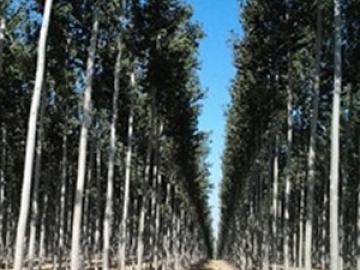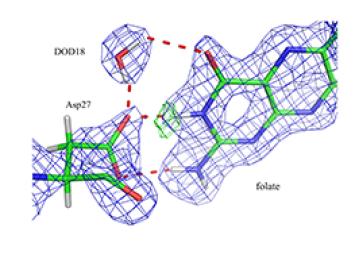Filter News
Area of Research
- Biology and Soft Matter (1)
- Chemical and Engineering Materials (1)
- Chemistry and Physics at Interfaces (3)
- Clean Energy (7)
- Computational Chemistry (1)
- Energy Frontier Research Centers (3)
- Functional Materials for Energy (3)
- Fusion Energy (1)
- Geographic Information Science and Technology (1)
- Materials (10)
- Materials Synthesis from Atoms to Systems (3)
- Materials Under Extremes (3)
- Neutron Science (6)
- Nuclear Science and Technology (2)
- Quantum Condensed Matter (1)
- Supercomputing (5)
News Type
Media Contacts

Through drought and flood, winter freeze and summer heat, and the occasional deer nibble or beaver gnaw, trees stand sturdy. Partly, trees can thank genetic makeup, refined through millennia, for the ability to overcome much of what Mother Nature hurls their way.

The early 1980s conventional wisdom was that almost everything was known about ribosomes, the cellular structures responsible for making proteins according to the genetic instructions.

Inadequate insulation is one of the largest causes of wasted energy, quickly allowing comfortable heating or cooling to disperse air outside.

Girl Scouts of the USA Chief Executive Officer Anna Maria Chavez visited the Department of Energy’s Oak Ridge National Laboratory to learn about its efforts on behalf of science, technology, engineering and math education (STEM) programs and how they can be incorpora...

Scientists at the US Department of Energy’s Oak Ridge National Laboratory are learning how the properties of water molecules on the surface of metal oxides can be used to better control these minerals and use them to make products such as more efficient semiconductors for organic light emitting diodes and solar cells, safer vehicle glass in fog and frost, and more environmentally friendly chemical sensors for industrial applications.

Enzymes are catalysts that speed up chemical reactions in living organisms and control many cellular biological processes by converting a molecule, or substrate, into a product used by the cell. For scientists, understanding details of how enzymes work is essential to the discovery of drugs to cure diseases and treat disorders.




